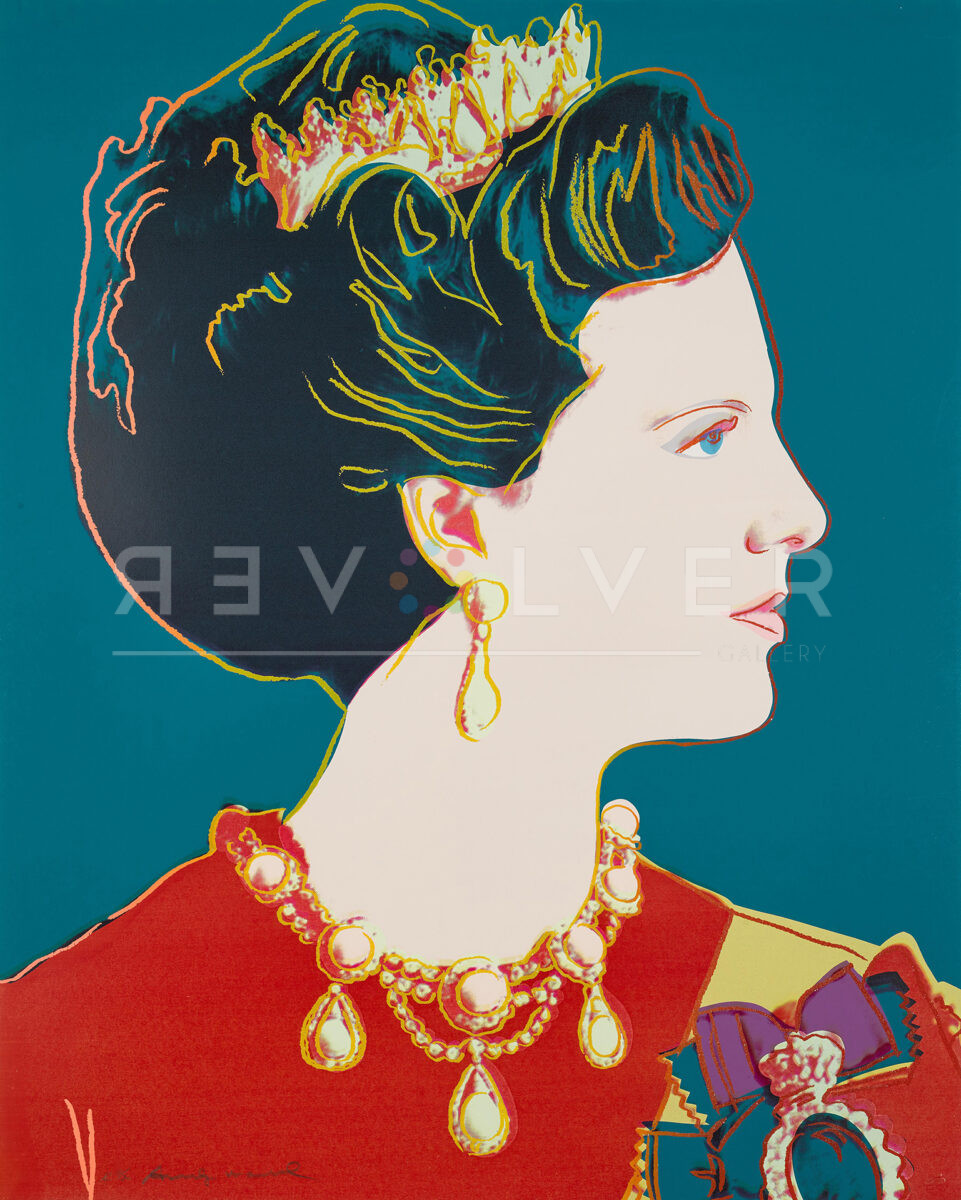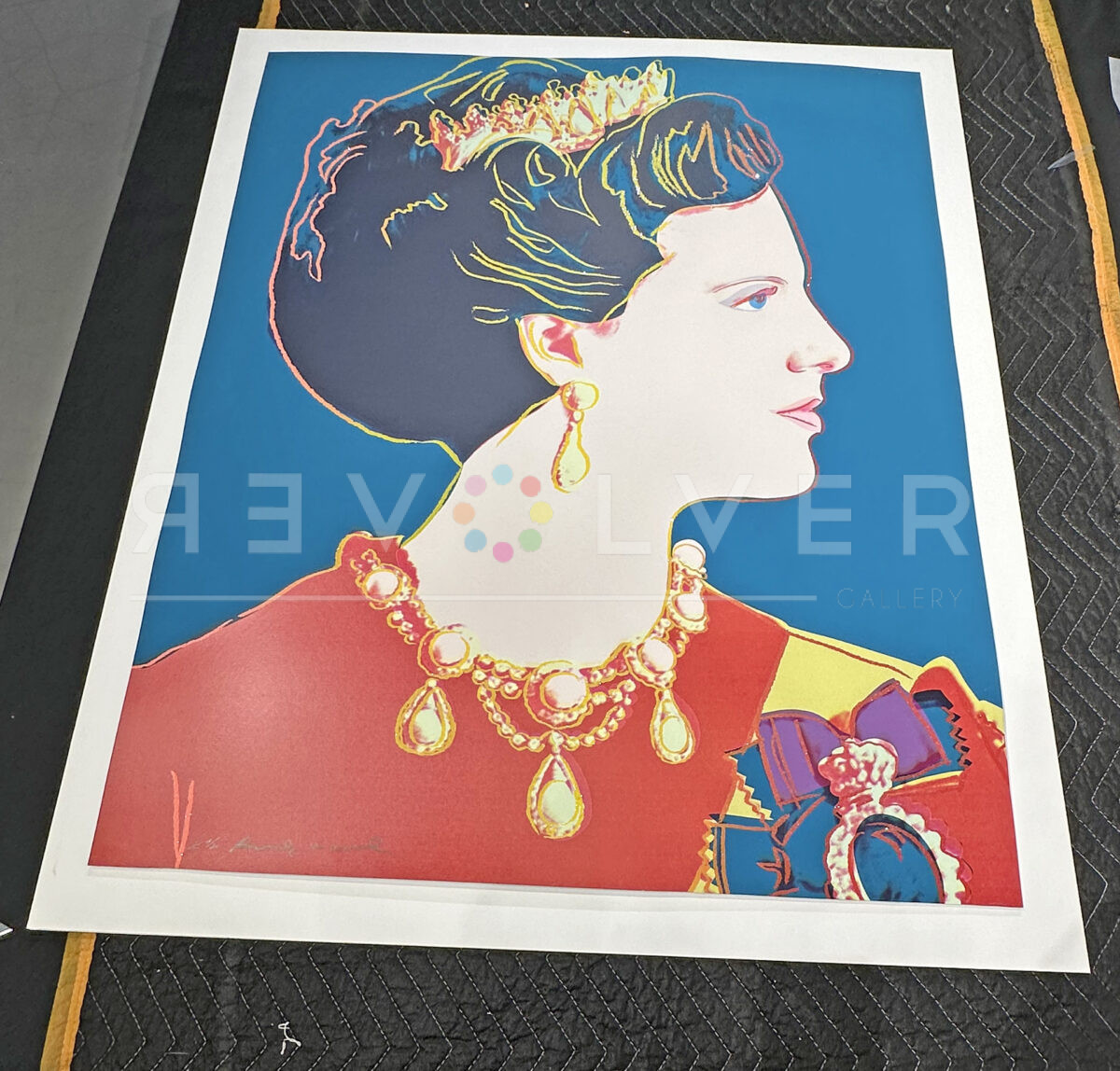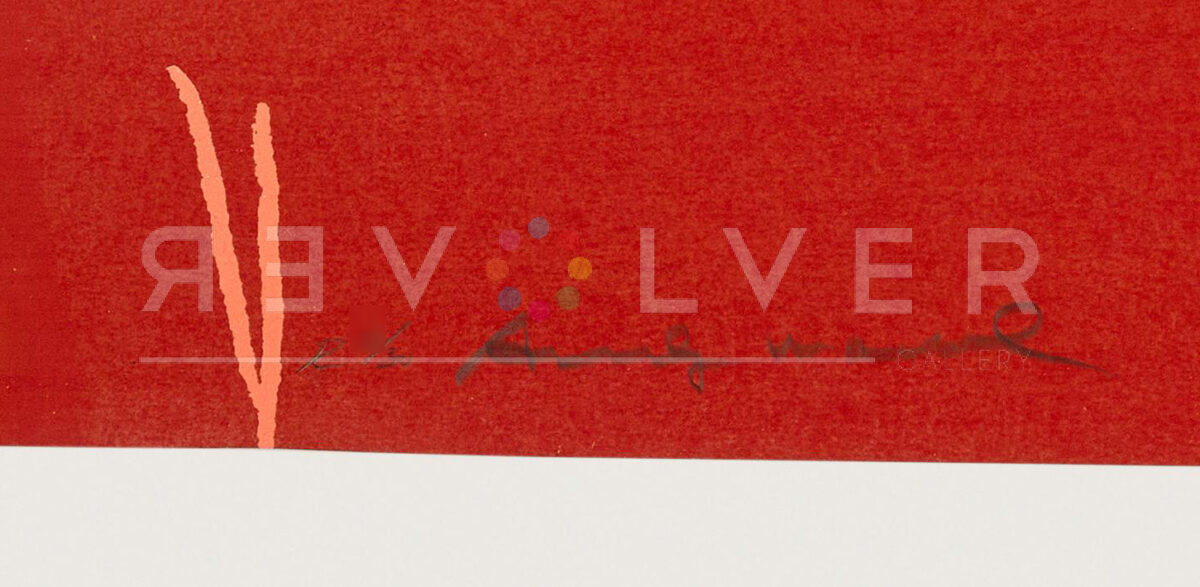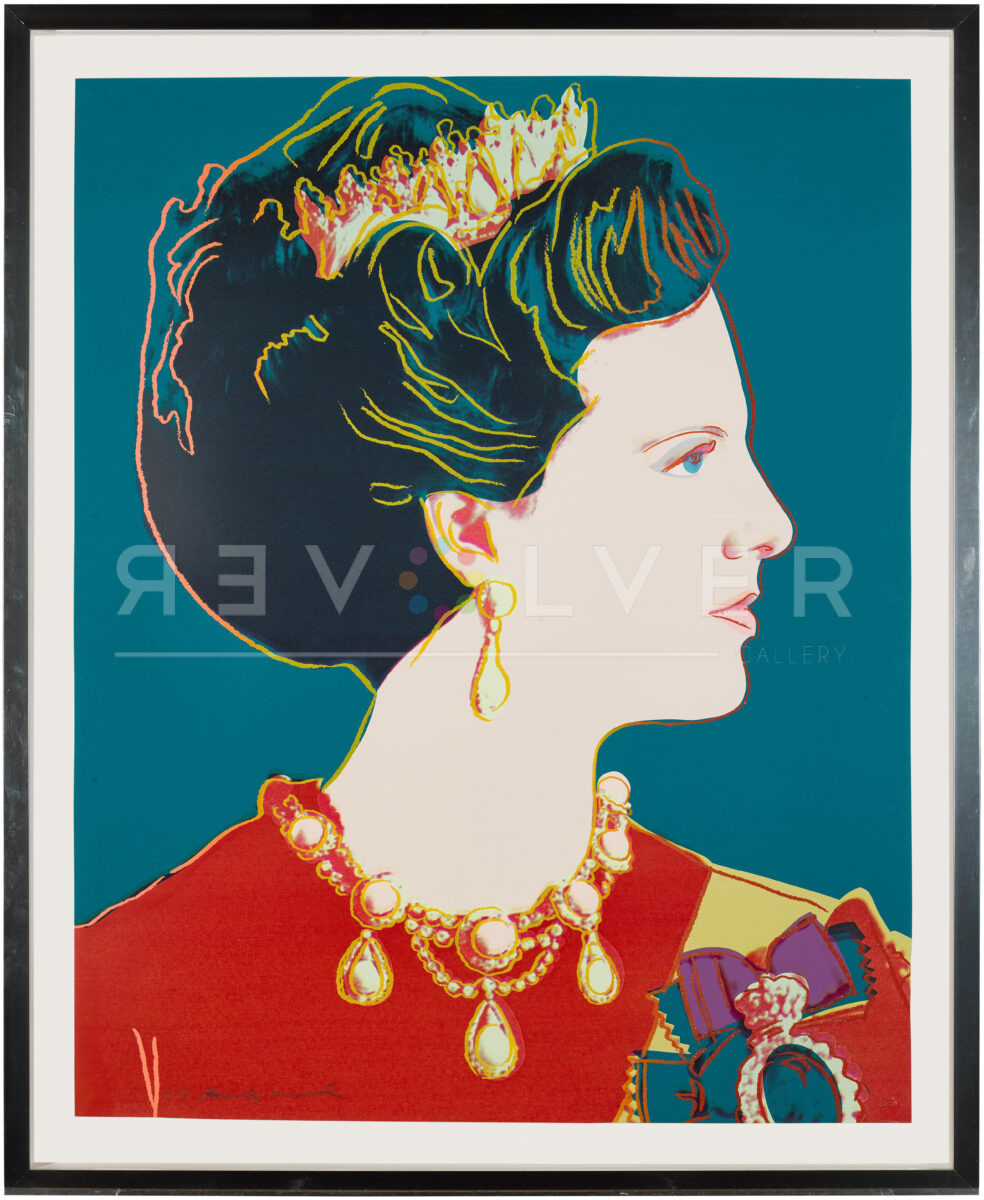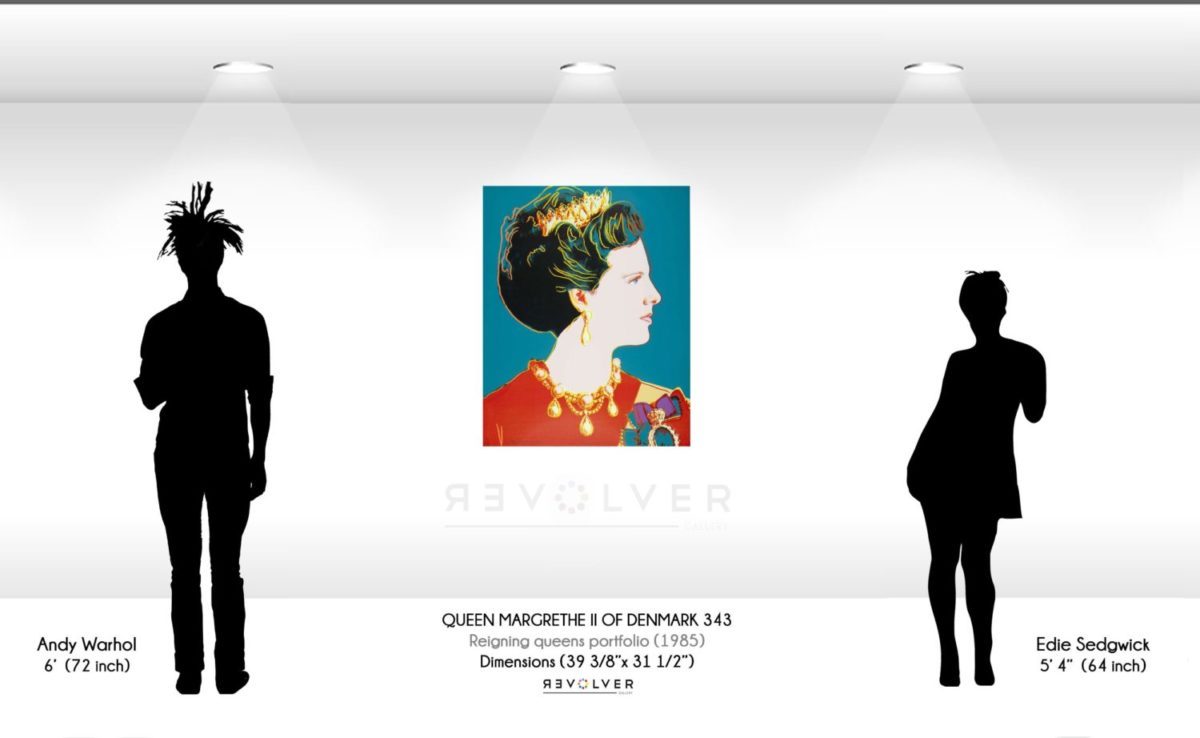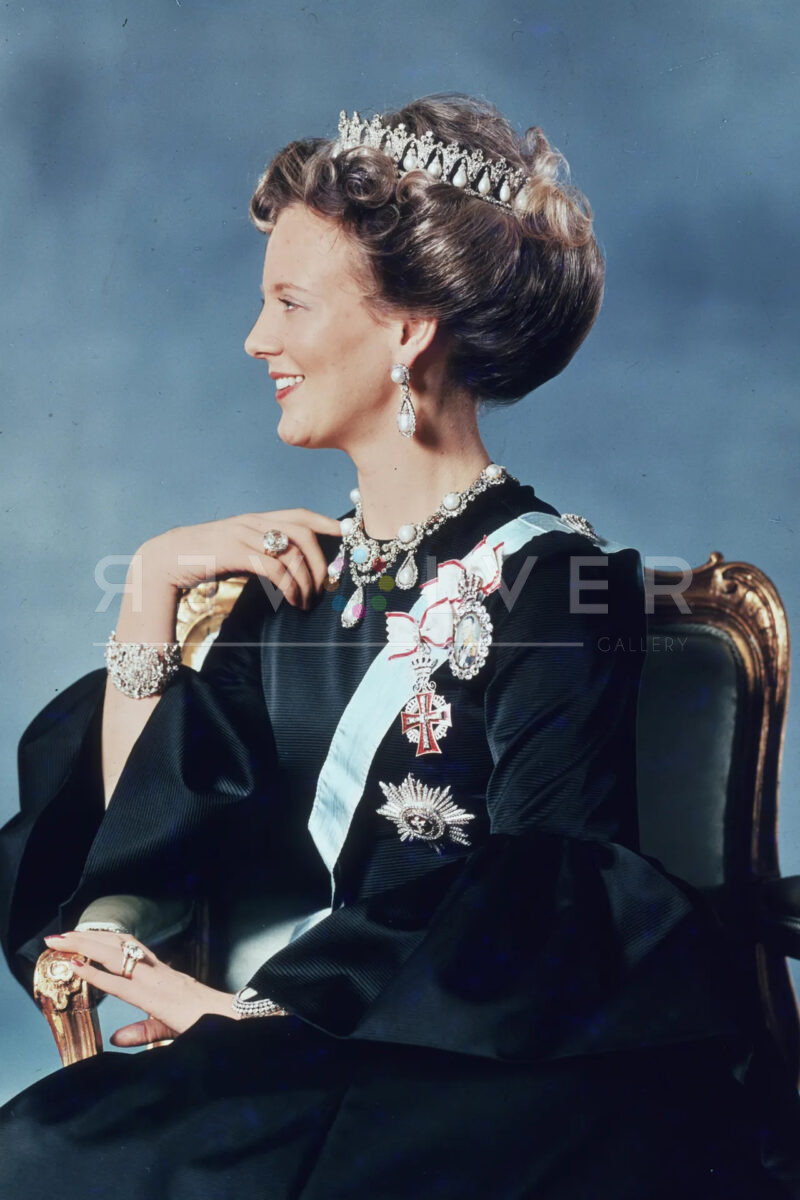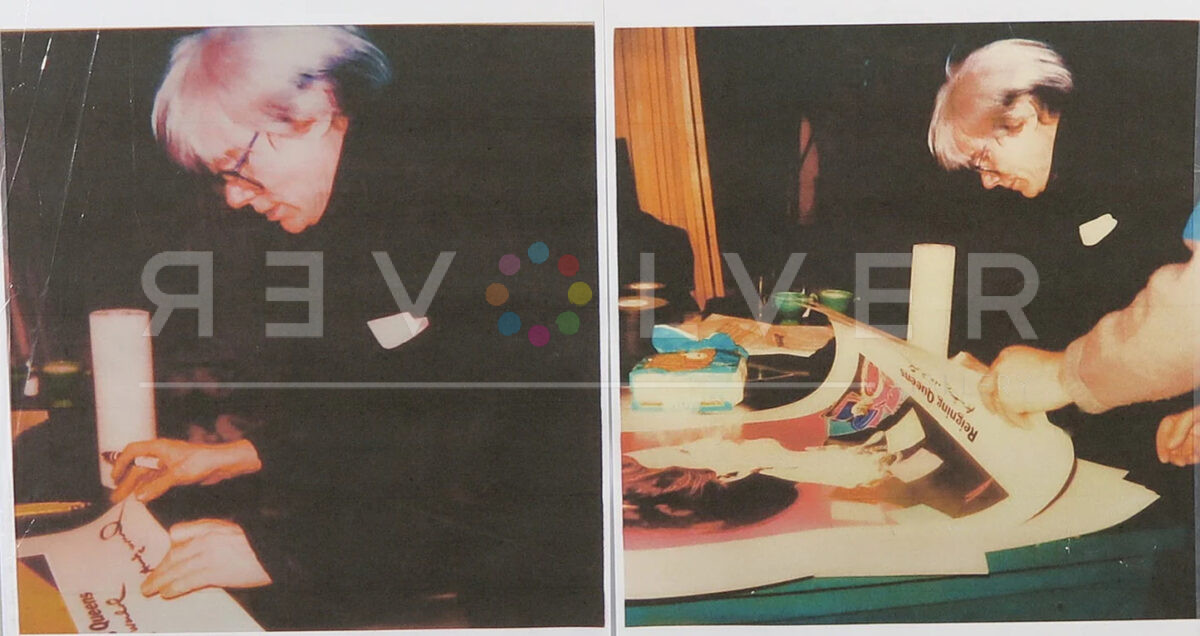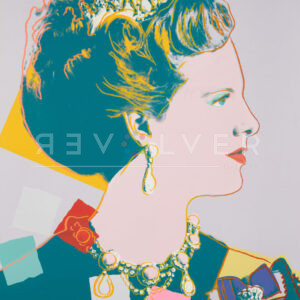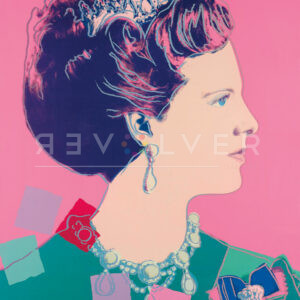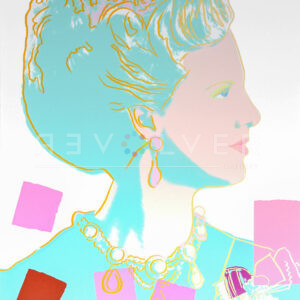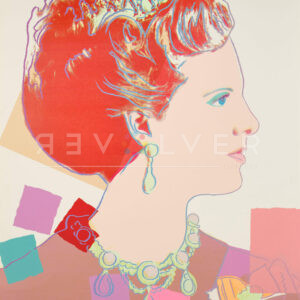Queen Margrethe II 343 by Andy Warhol is one of sixteen portraits from the Reigning Queens series published in 1985. The series includes four prints of four queens that were in power at the time. Queen Margrethe II of Denmark, Queen Ntombi Twala of Swaziland, Queen Elizabeth II of the United Kingdom, and Queen Beatrix of the Netherlands comprise the portfolio.
Warhol captures the queens as individuals in their own right, as opposed to queens who obtain power through marriage. Warhol’s interest in political figures is apparent through much of his work. Warhol also completed political pieces such as the Mao series, Vote McGovern 84, and the Lenin portfolio,
In this series, however, Warhol chose to represent women monarchs in an eloquent way. He focuses on their mystique and femininity, instead of the intimidating and serious portraits used in his other political portfolios. Later he released Reigning Queens (Royal Edition) which used diamond dust to further emphasize the elegance of the queens.
Surprisingly, Warhol did not want this series to be shown in America. In fact, he became infuriated with George Mulder, a print publisher, for showing the portfolio. Warhol expressed his frustration in his diary: “I had my opening at Leo Castelli’s to go to, of the Reigning Queens portfolio that I just hate George Mulder for showing here in America. They were supposed to be only for Europe—nobody here cares about royalty and it’ll be another bad review,” written in 1985.
In true Warhol fashion, Queen Margrethe II 343 uses bold colors to instantly draw your attention. But unlike his other political portraits, he doesn’t use those colors to portray the Queen in a menacing way. Instead he uses them to emphasize the eloquence of the Queen.
Even though the subjects in this series are royalty, Warhol presents them as celebrities similar to his other works. However, he reminds his audience that these are not celebrities. By using bold colors and highlights, he ensures his viewers recognize them as powerful monarchs who rule over nations.
Through the use of a darker background and light skin tone, Warhol instantly draws our attention to the subject. The bold, warm colors and highlights draw your attention to the accessories that show that this is, in fact, a royal figure. The choice of using a bright red for the Queen’s wardrobe draws your attention to the jewelry she is wearing. The large, gold jewels speak to the eloquence of the Queen.
The use of highlights in the queen’s hair further draws your attention to the elegance of the subject. Your attention is brought to the perfectly styled hair and ultimately to the crown itself. The crown is the most evident detail in all the portraits in Reigning Queens that emphasizes that these are powerful, royal women. Queen Margrethe II 343 is an elegant example of Warhol’s legacy as the reigning king of pop-art.
Photo credits:
- The first official photograph of Queen Margrethe II of Denmark after her ascension to the throne in 1972. Courtesy of the Hulton and Getty archives.
- Andy Warhol signing an offset lithograph that was issued for the promotion of the print of Queen Beatrix of the Netherlands. Unknown photographer.

